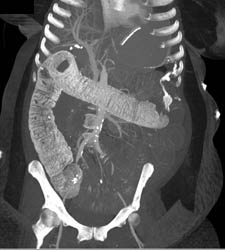
Because stress and mental health can also contribute to IBS and thus to splenic flexure syndrome, your doctor may recommend treatments targeting your mental health like psychotherapeutic drugs and therapy. As mentioned, some doctors recommend eating fewer carbohydrates, sugar substitutes, and eating more fiber-rich foods. Your doctor may order imaging tests like a CT scan to see if you have splenic flexure syndrome. They recommend eating fewer foods like carbohydrates, fatty foods, or artificial sugar substitutes because they can cause gas to build up, which can later lead to the disease.ĭiagnosis.

Some doctors think that what you eat can cause splenic flexure syndrome. Because stress can exacerbate IBS, it may also cause splenic flexure syndrome. People with irritable bowel syndrome, or IBS, are most likely to have splenic flexure syndrome, with some experts even considering it to be a type of IBS. The symptoms of splenic flexure syndrome include bloating, pain in the upper left abdomen, and a feeling of fullness in the abdomen.Ĭauses. This is known as “splenic flexure syndrome”. Gas can have difficulty traveling around the bend at the splenic flexure, which is the highest point of your colon, causing it to build up. But if you're experiencing a lot of abdominal pain in your upper left side, you could have a severe build-up of gas in your splenic flexure. Many people experience gas build-ups at times. Treatments for ischemic colitis depend on what caused it. If you're experiencing severe pain in your upper left abdomen, you may have ischemia in your colon. There are many types and causes of vascular disease.

Vascular disease affects the blood flow in your blood vessels. Surgeons have to be especially careful when operating near the splenic flexure for many reasons, but the most important one is that many blood vessels are found in the area. Colon cancer can be more difficult to treat or operate on if it is near the splenic flexure. A tumor growing in or near your splenic flexure can affect the nearby blood vessels and slow or block blood flow. A serious injury near your splenic flexure could damage your colon and affect blood flow in the area.Ĭancer. What Affects the Blood Flow at Your Splenic Flexure? Ischemia involving the colon is often called ischemic colitis. If blood flow is completely blocked, you can get ischemia, which is when a part of your body doesn't get enough oxygen, causing a part or all of your colon to die.Ī place that is most important for blood flow in the splenic flexure is called Griffiths' Point. Sometimes, these changes can cause low blood pressure or blood loss. That is to say, changes to the splenic flexure can affect blood flow. Two major arteries - the blood vessels that carry oxygen-containing blood - come together at the splenic flexure. If the gas build-up too much, you can get “splenic flexure syndrome”. Since the splenic flexure is a bend in the colon, gas can build up in that area. Injuries to the colon near the splenic flexure can cause blood loss or low blood pressure. Many blood vessels come together at the splenic flexure, so the area is important for blood flow. It is the highest point your colon reaches in your body. The splenic flexure is the bend where the transverse colon and descending colon meet in the upper left part of your abdomen. Finally, it heads back down toward your anus in the descending colon. Then, it crosses your abdomen to the left side of your body through the transverse colon. It first travels up through the ascending colon to your upper right abdomen. Food is transformed into stool as it travels through the colon. Your small intestine meets your colon in your lower right abdomen. The splenic flexure is called that because it's near your spleen, but sometimes it's called the left colic flexure because it's on the left side of your body. Your colon has two flexures: one on the right side and one on the left. Where is the Splenic Flexure?Ī "flexure" is a place where the colon bends. Your doctor might mention the involvement of your splenic flexure if you're experiencing a lot of pain in your upper left abdomen or if you have conditions involving your colon. It's also the place where many blood vessels come together.

The splenic flexure is a part of your colon, or your large intestine, where it bends near your spleen, an organ that mainly filters your blood.


 0 kommentar(er)
0 kommentar(er)
